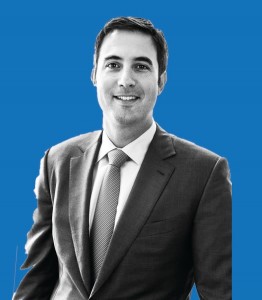From the September issue: In 2014, the leasing activity of TAMI (technology, advertising, media and information) tenants surpassed for the first time Manhattan’s traditionally dominant category — that of finance, insurance and real estate firms — 31.4 percent to 28.8 percent. In commercial districts like Midtown South, where start-ups initially flocked in search of value, overall average asking rents rose to $69 per square foot from $47 per square foot — a 45 percent hike — between 2009 and 2016. While many start-ups are willing to stretch their budgets to capitalize on Midtown South’s cachet, others are now looking further afield. It’s not only about money: As companies mature, they may find that the charming industrial buildings that housed them during their early days don’t have the infrastructure and size to support their growing workforces. Pre-built, move-in-ready space is in demand, and there’s a lot available, as firms that warehoused space in the hopes of growing into it dial back their expectations. Some companies, like Mediamath, a digital ad buying firm, are decamping to the Financial District, convinced that their culture can still thrive in a traditional office building. “You’d be surprised what interior designers can do in glass-and-steel office buildings, like the Empire State Building, 4 World Trade Center Or Brookfield Place,” said Eric Thomas of tenant brokerage Cresa New York [TRDataCustom].
For our first web installment on the next wave of tech districts and the relationships between landlords and TAMI tenants, we turn to Kathe Chase of Industry City and Enrique Alonso of SJP Properties.

Kathe Chase
Kathe Chase
Director of leasing, Industry City
Where do you see the office market headed in the next six months, and how will that play out in Sunset Park at Industry City?
I see some softening, but it’s not yet a tenant’s market, and the softening won’t apply to us. We’re offering a distinct value proposition — a campus in the middle of New York City with food, retail, outdoor space, pop-ups, tenant events and so much more for an already below-market rent.
What is Industry City doing to lure tech tenants?
What’s changed over the past several years is that the ultimate end-user — the workforce — is very much driving the leasing decisions. In 2014, 150,000 of the 291,000 total tech jobs in New York City were in non-tech companies. Non-tech companies have become tech companies. There aren’t enough techies to fill those jobs. Companies use their physical spaces as a recruiting tool. Because of our scale, 6 million square feet, we can offer things that other landlords can’t. We have a tenant lounge with shuffleboard, pool tables and a bar, as well as a private dining room. We also have a private gym, event spaces, acres of landscaped outdoor spaces, rooftop spaces and 15 restaurants. But connectivity is king in terms of attracting tech tenants, which, frankly, means almost all tenants. In 2015, Industry City became the first existing property in the outer boroughs to be Platinum-certified by WiredScore, the same as Google’s 111 Eighth Avenue.
Do you think Moynihan Station will turn into a tech hub if GE, which is now billing itself as a tech company, moves there?
New York City, as a whole, is a tech hub. There will never be a part of New York City that is the tech hub. NYC’s density and connectivity, in terms of mass transit, means that businesses and people are very, very close to one another. Google is in Chelsea; IBM is in Soho; Facebook is in Greenwich Village; Etsy is in Dumbo. Certain buildings will become micro-hubs — the ones with the best fiber connectivity [and] the best accessibility.
How do you size up the economic potential of start-ups that have little to no earnings history?
For most owners, newer tech companies give pause. But by virtue of our scale, the risk we take on start-ups is worthwhile. Part of our development strategy is geared toward supporting the continued growth of our many small business tenants. And our six million square feet allow us to do short-term deals in small spaces with optionality for larger spaces, so that companies can scale up responsibly, with low risk for both us and them.

Enrique Alonso
Enrique Alonso
Executive vice president, SJP Properties
Are TAMI tenants looking for different amenities and locations than they once did?
Despite their preference for pre-war aesthetics, we have seen some of the larger tenants choose new construction. At our Eleven Times Square building in Midtown West [at 640 Eighth Avenue], we have Microsoft, eMarketer, Answers.com and Ullink headquartered. The larger the tenant, the more focused they will be on infrastructure economics and transportation because their employees will be more geographically and demographically diverse.
Manhattan will almost always be the preferred location for tenants that can afford it. Much of the new supply coming to Brooklyn does not appear to be priced at much of a discount from Manhattan. The larger tenants are less likely to relocate to Brooklyn given the influence that the CFO and purchasing agents have in their real estate decisions. It’s a somewhat different story for smaller players that have most of their employees already living in Brooklyn, or for those that are making a branding play by relocating to a hip neighborhood. Some of the more unique Brooklyn developments — Empire Stores comes to mind — will compete, but we don’t see this as a major threat to the Manhattan leasing market.
Are there any markets tech tenants are looking at outside of Brooklyn and Manhattan?
Given the ease of transportation, state incentives and lower rents, we like the New Jersey urban transit markets. In Hoboken, we signed a 60,000-square-foot lease with NICE Systems and another 60,000-square-foot lease with start-up Jet.com. In Newark, we signed a 337,000-square-foot net lease with Panasonic, which relocated its North American headquarters to a facility that we built. We think Jersey City presents another great opportunity given the extraordinary amount of residential product being built there, the efficient access to Manhattan and the unique work/live/play environment. At 95 Greene Street in Jersey City, we converted an old toothpaste factory to office space and are now planning a major redesign targeting the needs of the tech community.